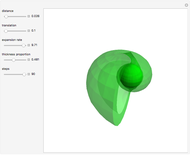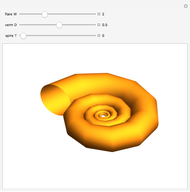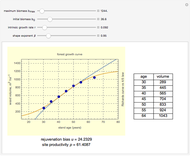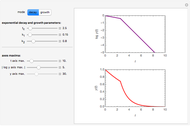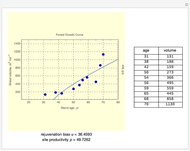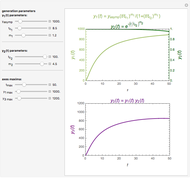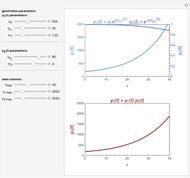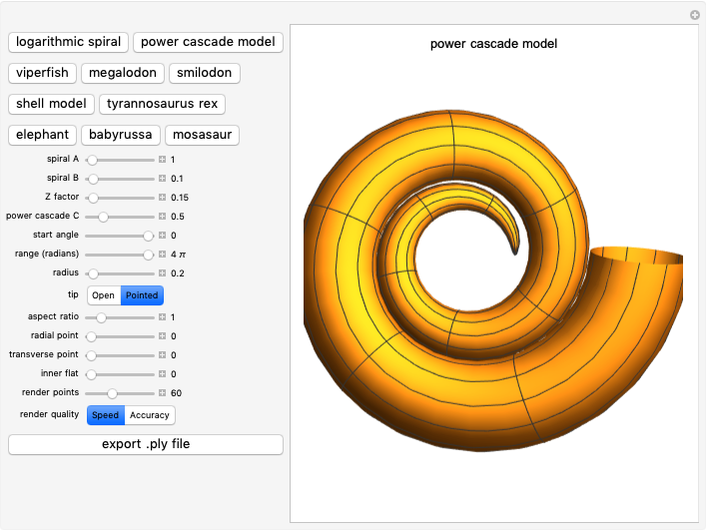Power-Law Cascade to Model Growth of Teeth, Horns and Claws

Requires a Wolfram Notebook System
Interact on desktop, mobile and cloud with the free Wolfram Player or other Wolfram Language products.
This Demonstration applies the power-law cascade model of growth to the shape of teeth, horns, claws and beaks of animals. A power law is used to model the dependence of the radial growth of the structure with its length to form a power cone. The power cone is twisted along a logarithmic spiral to form a power spiral. Click the buttons, for example, "tyrannosaurus rex", to simulate the tooth shape of different animals, or move the sliders to change the shape.
[more]
Contributed by: Alistair Evans and Tim Wilson (May 2021)
(Monash University, Australia)
Open content licensed under CC BY-NC-SA
Snapshots
Details
Reference
[1] A. R. Evans, T. I. Pollock, S. G. C. Cleuren, W. M. G. Parker, H. L. Richards, K. L. S. Garland, E. M. G. Fitzgerald, et al., "A Universal Power Law for Modelling the Growth and Form of Teeth, Claws, Horns, Thorns, Beaks, and Shells," BMC Biology, 19(58), 2021. bmcbiol.biomedcentral.com/articles/10.1186/s12915-021-00990-w.
Permanent Citation








